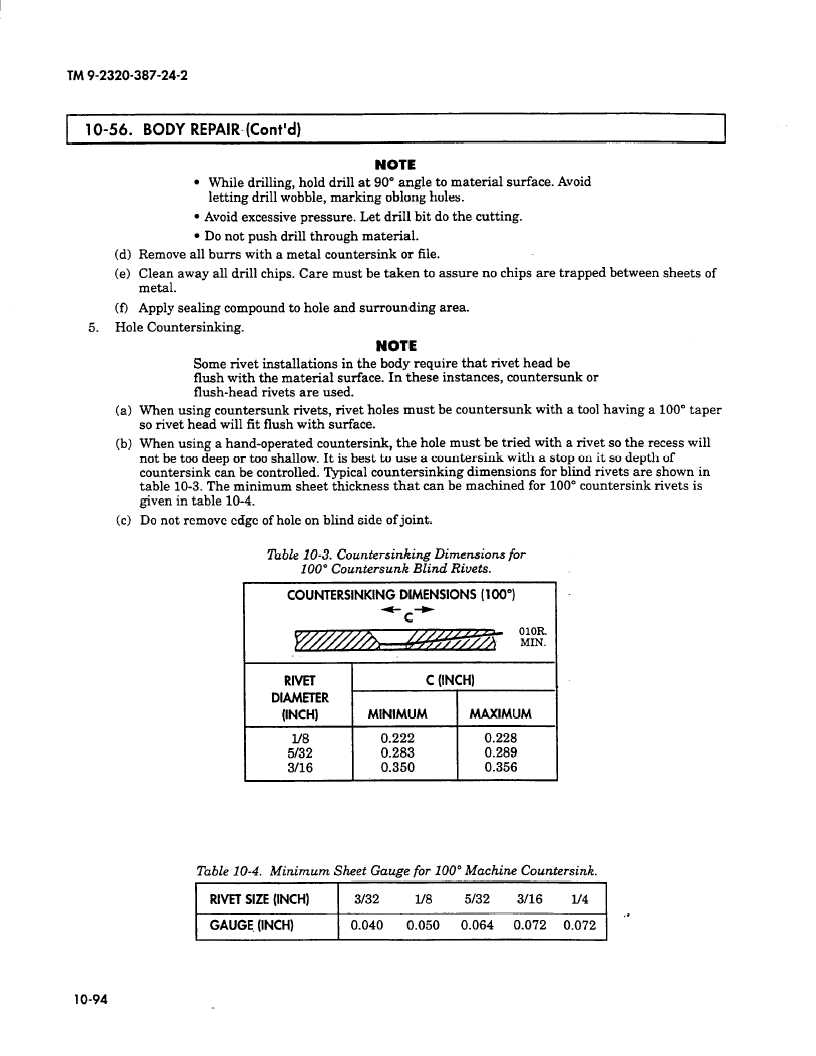TM 9-2320-387-24-2
1 O-56.
BODY REPAIR-(Cont’d)
NOTE
While drilling, hold drill at 90” angle to material surface. Avoid
letting drill wobble, marking oblong holes.
Avoid excessive pressure. Let drill bit do the cutting.
Do not push drill through material.
(d) Remove all burrs with a metal countersink or file.
(e) Clean away all drill chips. Care must be taken to assure no chips are trapped between sheets of
metal.
(f) Apply sealing compound to hole and surrounding area.
5.
Hole Countersinking.
(a)
(b)
(cl
NOTE
Some rivet installations in the body require that rivet head be
flush with the material surface. In these instances, countersunk or
flush-head rivets are used.
When using countersunk rivets, rivet holes must be countersunk with a tool having a 100” taper
so rivet head will fit flush with surface.
When using a hand-operated countersink, the hole must be tried with a rivet so the recess will
not be too deep or too shallow. It is best to use a countersink with a stop on it so depth of
countersink can be controlled. Typical countersinking dimensions for blind rivets are shown in
table 10-3. The minimum sheet thickness that can be machined for 100” countersink rivets is
given in table 10-4.
Do not remove edge of hole on blind side of joint.
Table 10-3. Countersinking
Dimensions
for
100” Countersunk
Blind Rivets.
COUNTERSINKING
DIMENSIONS (100’)
4-a
C
Table 10-4. Minimum
Sheet Gauge for 100” Machine
Countersink.
RIVET SIZE (INCH)
3132
If8
5132
3116
I/4
‘*
GAUGE. (INCH)
0.040
0.050
0.064
0.072
0.072
1 o-94

